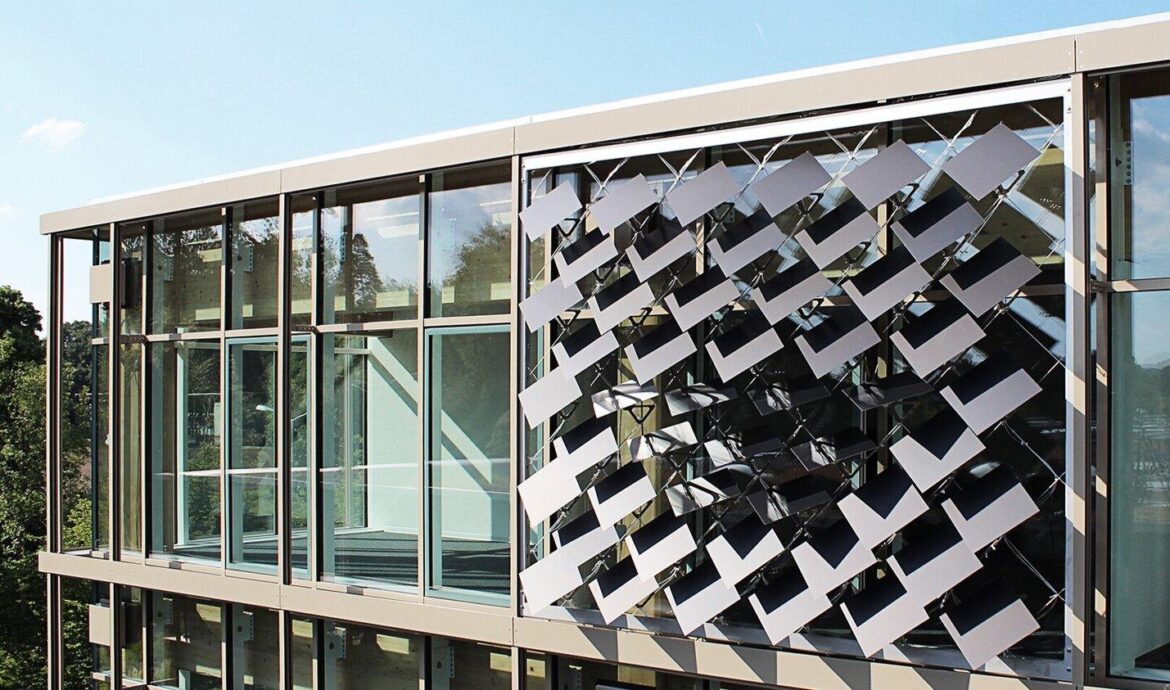
Unveiling the power of the sun: A guide to estimating your building’s solar energy potential and beyond
On 04.10.2023 by Ayca DuranBy Ayca Duran

Ayca Duran is a doctoral researcher working in the Architecture and Building Systems group at ETH Zurich. Her research focuses on integrating PV systems into buildings using a machine learning-based approach and the interaction between BIPV systems and built environments. She aims to analyze various aspects of this interaction, with a particular emphasis on urban climate, outdoor thermal comfort, and BIPV efficiency to facilitate decision-making in performance-driven building design.
Harnessing the sun’s energy to generate electricity through building envelopes presents an opportunity for us to contribute to a better future. But what is the energy generation potential of your building, and how can you estimate it? Beyond energy generation and savings, what should you keep in mind before integrating photovoltaic systems (PVs)? Making an informed decision is essential when thinking about installing solar PV on your building. This involves understanding its solar generation potential and weighing all other relevant factors. In this blog post, I will walk you through the process—from estimating solar energy potential to considering factors beyond mere energy generation, helping you make an informed decision.
In the search for sustainable energy solutions, solar energy has emerged as one of the most viable options, as it is readily available and abundant. However, transitioning to solar energy requires making a well-informed decision for a sustainable and future-proof energy system. To make this decision, it is essential to estimate your building’s potential for solar power generation. Beyond that, it is important to understand the viability of your solar systems from multiple angles. These include your energy consumption, financial considerations, and technical aspects of the system, as well as its emissions, interactions with the microclimate, and the influence of shading. Taking into consideration all relevant factors, you can confidently integrate solar systems into your building’s envelope. The starting point for any solar energy adoption is assessing your building’s potential to harness solar power. A variety of tools and methods are available for this purpose. Let me introduce them.
Understanding solar energy potentials of buildings.
Solar Maps and Databases: Solar maps and databases provide you with valuable information on solar energy potential based on geographical location. These resources utilize satellite data, historical weather patterns, and local solar radiation data to estimate the solar energy potential in a given area. Online platforms, like Global Solar Atlas, PVWatts, and Sonnendach & Sonnenfassade, can assist you in estimating the solar energy production of a building. And the best part is they are free and open to the public. Give them a try! By providing specific details about your location and system characteristics, you can obtain estimates of energy production, system performance, and financial returns.
Simulation and modeling of sunlight exposure: While solar maps and databases give a general overview of solar potential based on geographical factors, diving deeper into individual building assessment is where simulation and modeling tools come into play. Assessing solar potential involves determining the amount of sunlight your building receives throughout the day. By considering the orientation, tilt, and shading factors of your roof or available space, you can estimate the solar energy potential more accurately at different time resolutions. Simulation tools such as Hive, Ladybug Tools, and Climate Studio, or simple measurement instruments, such as a pathfinder can aid in conducting these assessments. You can identify potential shading obstacles and make necessary adjustments to optimize solar energy generation with these tools.
From consumption to costs: Addressing basic considerations before integrating PVs
Assessing your building’s solar energy potential is the first step in deciding whether to apply PVs onto your building’s envelope. Additionally, several key considerations should be addressed to make a more informed decision: Understanding your energy consumption patterns helps determine the appropriate size of the solar energy system and identify opportunities for energy efficiency improvements. One way to achieve this is by analyzing historical data or installing a smart meter to track consumption before investing in a PV system. Another important consideration involves the financial aspects, including assessing upfront costs, subsidies, and calculating the payback period and return on investment, to ensure the project’s economic viability. Technical aspects need detailed scrutiny as well: consider the appropriate system size based on your building’s solar potential; understand the maintenance requirements, including frequency and potential costs; research the durability and warranty of different panel types; and explore grid integration options to ensure seamless energy transition, possibly consulting with experts in the field for a comprehensive evaluation. However, besides these traditional considerations, we should also be aware of emerging factors that can be equally significant when making a decision:
Considerations beyond energy generation
Urban microclimates : Large-scale adoption of solar energy can alter urban microclimates, influencing temperature and wind patterns. The heated solar panels become radiative and convective heat sources that can increase the ambient air temperature in cities, contributing to the urban heat island effect. However, due to the low thermal mass of PV panels, they heat up and cool down more rapidly than other urban surfaces, potentially causing rear-ventilated PV surfaces to cool down the ambient air temperature at night. The result can depend on the system type and installation details as well as the local climate affected by many other factors such as architectural design or urban planning decisions. Integrating solar energy systems in harmony with the urban landscape can help mitigate any unintended consequences.
Carbon emissions: While solar energy generation reduces carbon emissions, it is important to consider the embodied energy and carbon footprint associated with the production and disposal of solar panels. The environmental impact of a PV panel is strongly dependent on the panel’s composition, which is in turn dependent on the selected components and production location. Conducting a lifecycle analysis helps determine the net environmental benefits of solar installations. Additionally, exploring options for recycling or reusing solar panels at the end of their life cycle contributes to a more sustainable approach.
Shading: Building-integrated PV applications in cities, especially facades, are susceptible to shading from buildings, trees and many different components of the urban environment. When solar panels cast shadows on each other or are shaded by urban elements, their energy output can decrease significantly and cause potential panel damage typically during early mornings and late afternoons. Hence, in addition to assessing how much sunlight your building can harness, minimizing self-shading through strategic panel arrangement is crucial for maximizing energy production. This ensures efficient utilization of available sunlight and optimal performance of the solar system.
Conclusion: A holistic approach
The decision to switch to solar energy is not merely about measuring sunlight exposure or crunching numbers on potential savings. It is a holistic process that requires careful consideration of various factors, from your energy needs and grid integration to its impact on your carbon footprint and local climate in your neighborhood. While the available tools and methods can provide valuable data, understanding and interpreting this data in the larger context of your circumstances is key to making an informed decision.
As we look towards a future powered by the sun, remember that assessing your building’s solar energy potential is the first step in this exciting journey. Make your decision an informed one, considering the impact on your life, your community, and our shared environment.
Cover image : “ASF – Adaptive Solar Facade”, A/S Research Group, retrieved from https://systems.arch.ethz.ch/demonstrators/asf-at-honr
Keep up with the Energy Blog @ ETH Zurich on Twitter @eth_energy_blog.
Suggested citation: Ayca, Duran. “ Unveiling the power of the sun: A guide to estimating your building’s solar energy potential and beyond”, Energy Blog @ ETH Zurich, ETH Zurich, October 03, 2023, https://blogt.ethz.ch/energy/buildings_solar_energy
